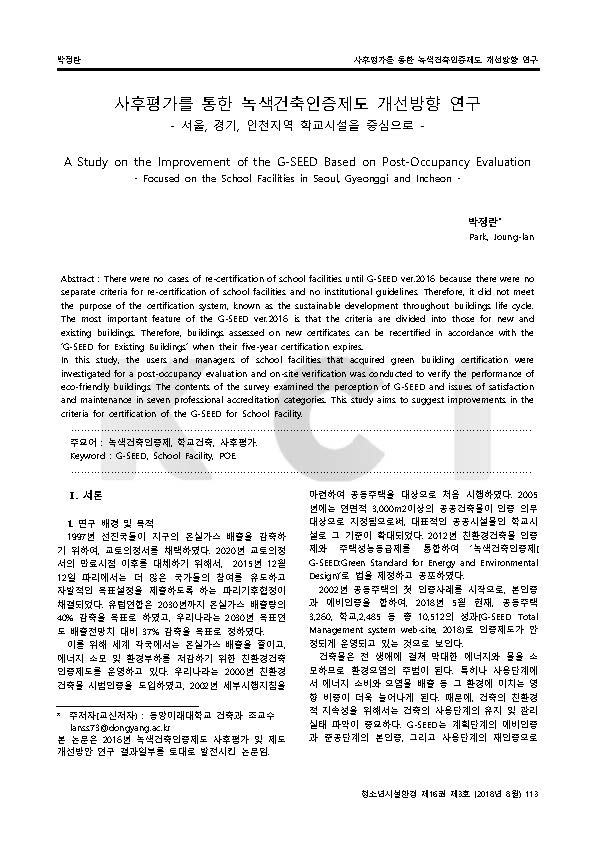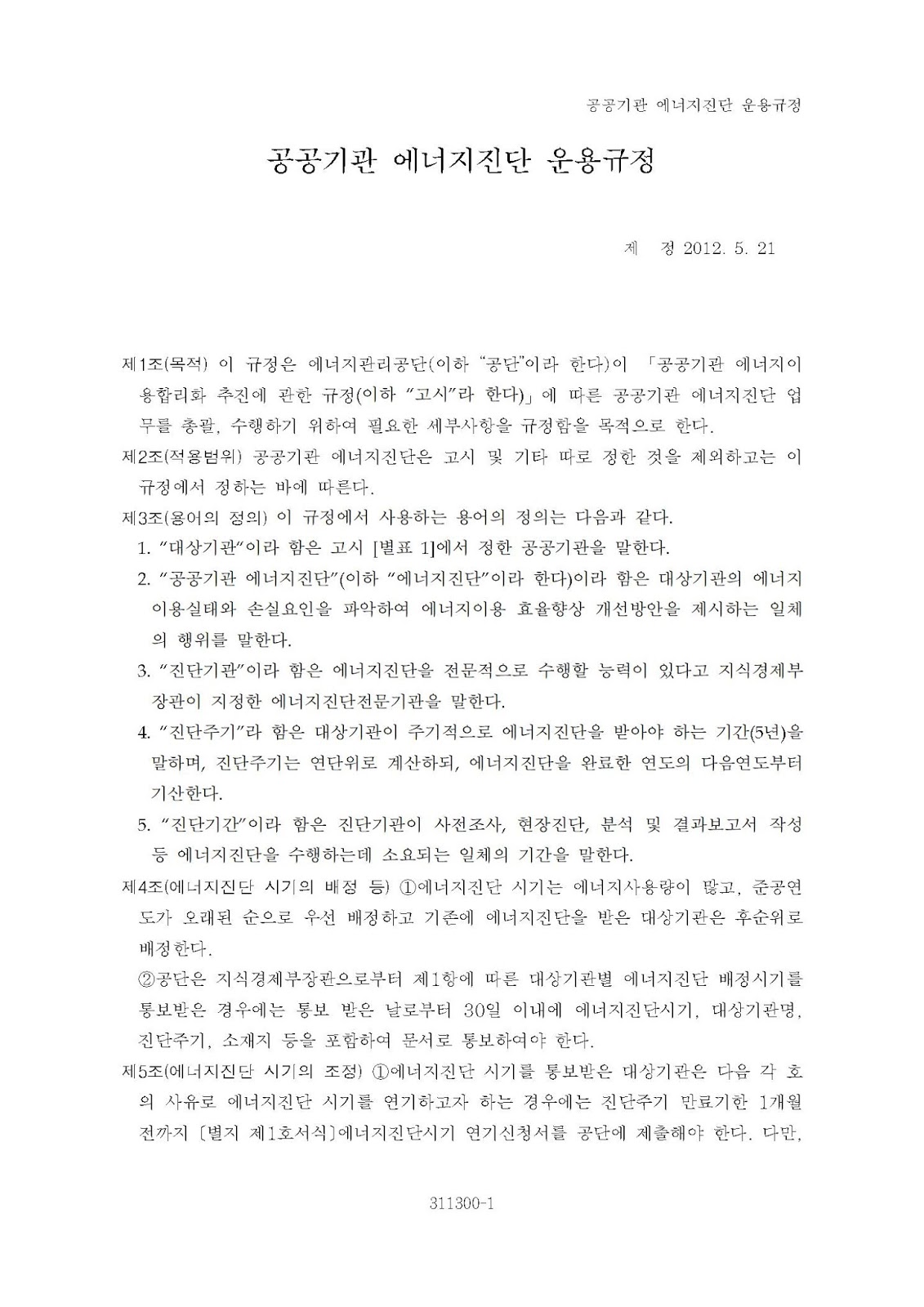사후평가를 통한 녹색건축인증제도 개선방향 연구 - 서울, 경기, 인천지역 학교시설을 중심으로
사후평가를 통한 녹색건축인증제도 개선방향 연구 - 서울, 경기, 인천지역 학교시설을 중심으로
A Study on the Improvement of the G-SEED Based on Post-Occupancy Evaluation - Focused on the School Facilities in Seoul, Gyeonggi and Incheon
저자 박정란
소속 동양미래대학교
학술지정보 청소년시설환경
발행정보 한국청소년시설환경학회 2018년
자료제공처 학술교육원 NRF
주제분야 교육 > 학생지도
<초록>
Abstract : There were no cases of re-certification of school facilities until G-SEED ver.2016 because there were noseparate criteria for re-certification of school facilities and no institutional guidelines. Therefore, it did not meetthe purpose of the certification system, known as the sustainable development throughout buildings life cycle. The most important feature of the G-SEED ver.2016 is that the criteria are divided into those for new andexisting buildings. Therefore, buildings assessed on new certificates can be recertified in accordance with the‘G-SEED for Existing Buildings’ when their five-year certification expires. In this study, the users and managers of school facilities that acquired green building certification wereinvestigated for a post-occupancy evaluation and on-site verification was conducted to verify the performance ofeco-friendly buildings. The contents of the survey examined the perception of G-SEED and issues of satisfactionand maintenance in seven professional accreditation categories. This study aims to suggest improvements in thecriteria for certification of the G-SEED for School Facility.
There were no cases of re-certification of school facilities until G-SEED ver.2016 because there were no separate criteria for re-certification of school facilities and no institutional guidelines. Therefore, it did not meet the purpose of the certification system, known as the sustainable development throughout buildings life cycle. The most important feature of the G-SEED ver.2016 is that the criteria are divided into those for new and existing buildings. Therefore, buildings assessed on new certificates can be recertified in accordance with the ‘G-SEED for Existing Buildings’ when their five-year certification expires. In this study, the users and managers of school facilities that acquired green building certification were investigated for a post-occupancy evaluation and on-site verification was conducted to verify the performance of eco-friendly buildings. The contents of the survey examined the perception of G-SEED and issues of satisfaction and maintenance in seven professional accreditation categories. This study aims to suggest improvements in the criteria for certification of the G-SEED for School Facility.
<목차>
Abstract
Ⅰ. 서론
1. 연구 배경 및 목적
2. 연구 범위 및 절차
Ⅱ. G-SEED ver.2016
1. 녹색건축인증제도 개정
2. 학교시설의 녹색건축인증 현황
Ⅲ. 학교시설의 사후평가
1. 사후평가 대상 학교 건물의 개요
2. 학교시설 현황 조사 및 사후평가
Ⅳ. 결론
연구의 한계 및 제언
참고문헌
저희 (주)한국녹색인증원은 '지속가능한 저탄소 녹색건축인증 기술연구소'의 전문기업으로 설립되어, 빠른 제도 변화와 변모하는 건설환경에 이바지하고자 합니다. (주))한국녹색인증원은 건축, 도시, 생태분야가 녹색건축물에 접목될 수 있도록 적절한 요소분석을 통해 에너지 절감형 건축, 자생적 생태환경, 온열환경, 빛환경의 면밀한 조사와 연구로 고객의 삶의 질 향상 및 더 나아가 인류의 존속성에 그 목적을 두고 있습니다. 한국녹색인증원은 친환경컨설팅 전문업체로 주택성능등급, 그린홈, 에너지소비총량제, 에너지성능지표검토서, 건물에너지효율등급, 장수명주택









(%EC%A0%9C19819%ED%98%B8)(20250501)001.jpg)
(%EC%A0%9C34657%ED%98%B8)(20240710)001.jpg)
댓글
댓글 쓰기